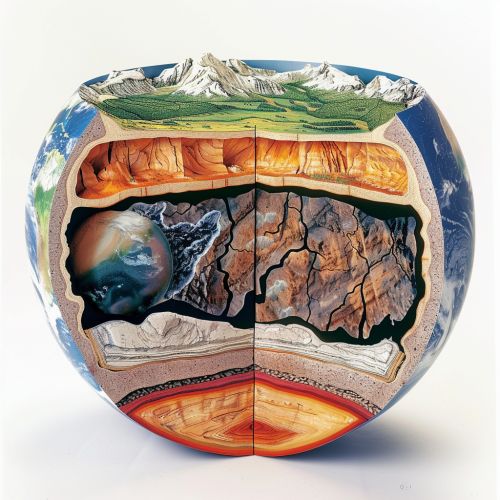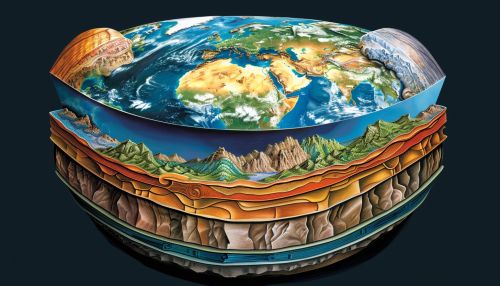Lithospheric plate
Introduction
The Earth's crust and the uppermost part of the mantle collectively form a rigid layer known as the lithospheric plate or simply, the lithosphere. This layer is broken into a number of tectonic plates, which are in constant motion due to the convective forces generated by the underlying asthenosphere.


Structure and Composition
The lithospheric plate is composed of two layers: the crust and the uppermost part of the mantle. The crust, which is the outermost layer, is further divided into the continental crust and the oceanic crust. The continental crust is thicker and less dense than the oceanic crust, which is why landmasses are elevated above the sea level. The uppermost part of the mantle, known as the lithospheric mantle, is rigid and behaves elastically over long time scales.
Plate Tectonics
The concept of plate tectonics is fundamental to understanding the lithospheric plate. This theory explains the large-scale motion of the Earth's lithosphere. The lithospheric plates are in constant motion, moving at a rate of a few centimeters per year. The boundaries where these plates meet are sites of significant geological activity, such as earthquakes, volcanic activity, and mountain building.
Plate Boundaries
There are three types of plate boundaries: divergent, convergent, and transform. Divergent boundaries occur when two plates move apart from each other, leading to the creation of new crust. Convergent boundaries occur when two plates move towards each other, resulting in one plate being forced beneath the other in a process known as subduction. Transform boundaries occur when two plates slide past each other horizontally.
Plate Movement
The movement of lithospheric plates is driven by the heat from the Earth's interior. This heat causes the rocks in the asthenosphere to convect, creating forces that move the overlying lithospheric plates. The movement of these plates is responsible for the Earth's seismic and volcanic activity, the creation of mountain ranges, and the formation of ocean basins.
Plate Interactions
The interactions between lithospheric plates at their boundaries can lead to the formation of various geological features. For instance, the collision of two continental plates at a convergent boundary can lead to the formation of mountain ranges, such as the Himalayas. Similarly, the divergence of two oceanic plates can lead to the formation of mid-ocean ridges, such as the Mid-Atlantic Ridge.
